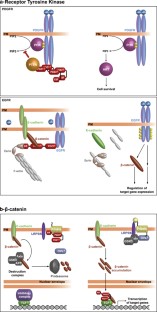

Pheromone signaling is inhibited by CDK activity and thus restricted to the G1 phase of the cell cycle when both partners have an equal amount of DNA, assuring genomic integrity ( Strickfaden et al., 2007). One such case is the yeast pheromone response pathway, which is activated in a cell cycle–dependent manner in haploid cells upon contact with a partner of opposite mating type. In the budding yeast Saccharomyces cerevisiae, many signaling components have been identified and studied at the molecular and mechanistic levels ( Brent, 2009 Alvaro and Thorner, 2016), but the dynamic interactions required to temporally and spatially orchestrate appropriate cellular responses remain poorly understood. Interplay between signaling networks determines proper regulation of cell growth, survival, and fate. These results uncover a mechanical stress–triggered crosstalk mechanism modulating pheromone signaling, polarized growth, and cell–cell fusion during mating. Cells expressing nonphosphorylatable Ste5 undergo increased lysis upon mechanical stress and exhibit defects in cell–cell fusion during mating, which is exacerbated by simultaneous expression of nonphosphorylatable Far1. Indeed, RING phosphorylation interferes with Ste5 membrane association by preventing binding to the receptor-linked Gβγ protein. Interestingly, Pkc1 triggers dispersal of Ste5 from mating projections upon mechanically induced stress and during cell–cell fusion, leading to inhibition of the MAPK Fus3. In vitro Pkc1 phosphorylates conserved residues within the RING-H2 domains of the scaffold proteins Far1 and Ste5, which are also phosphorylated in vivo. Here, we show that mechanical stress activates Pkc1, which prevents lysis of pheromone-treated cells by inhibiting polarized growth. However, the underlying crosstalk mechanisms remain poorly understood. In yeast, multiple stress signals regulate pheromone signaling to prevent mating under unfavorable conditions. doi:10.Cells continuously adapt cellular processes by integrating external and internal signals. In: Schwab M (ed) Encyclopedia of Cancer, 3rd edn. Scott JD, Pawson T (2009) Cell signaling in space and time: where proteins come together and when they’re apart. Polo SE, Jackson SP (2011) Dynamics of DNA damage response proteins at DNA breaks: a focus on protein modifications. Good MC, Zalatan JG, Lim WA (2011) Scaffold proteins: hubs for controlling the flow of cellular information. Giglia-Mari G, Zotter A, Vermeulen W (2011) DNA damage response. This process is experimental and the keywords may be updated as the learning algorithm improves.īrown MD, Sacks DB (2009) Protein scaffolds in MAP kinase signaling. These keywords were added by machine and not by the authors. The organization of signaling complexes on scaffold proteins is dynamic, and there is an order of assembly that may vary. Thus, there is a cellular need to organize pathways both in time and space, a role that is achieved by scaffold proteins. These molecules need to be organized into complexes that will affect timing, location, and even specificity and magnitude of a single response, such as to growth factors or protection against DNA damage, for example. Thus, pathway components need to be partially preorganized so that signal transduction is not limited by the diffusion kinetics of individual molecules. An individual cell has over one billion proteins, of which ten percent form part of signaling pathways and networks, and none of them is exclusive for a single pathway.


 0 kommentar(er)
0 kommentar(er)
